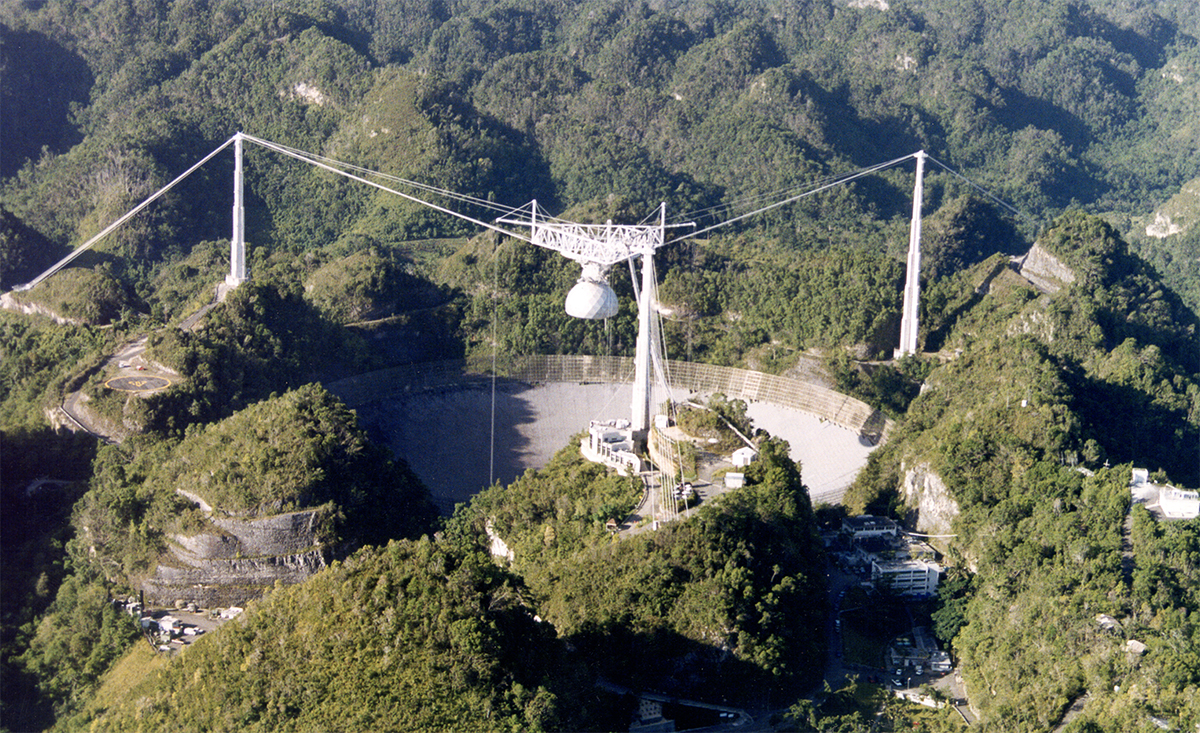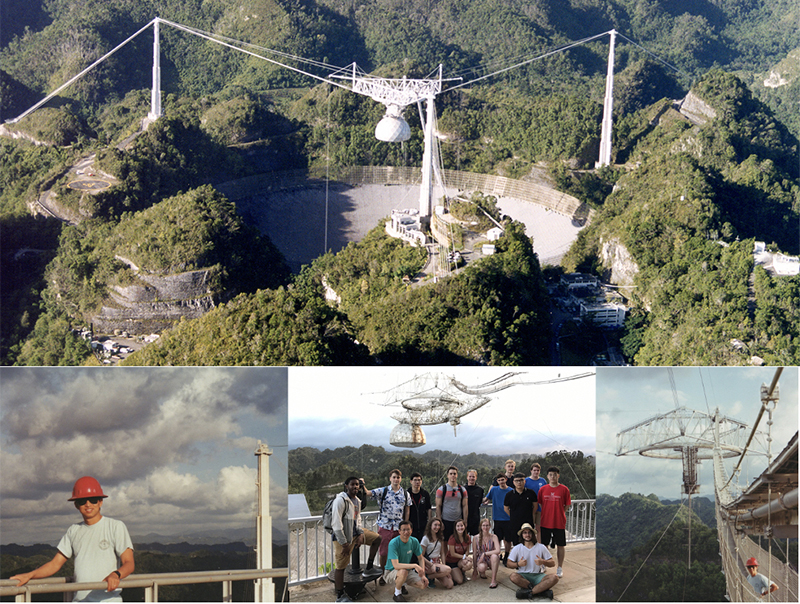
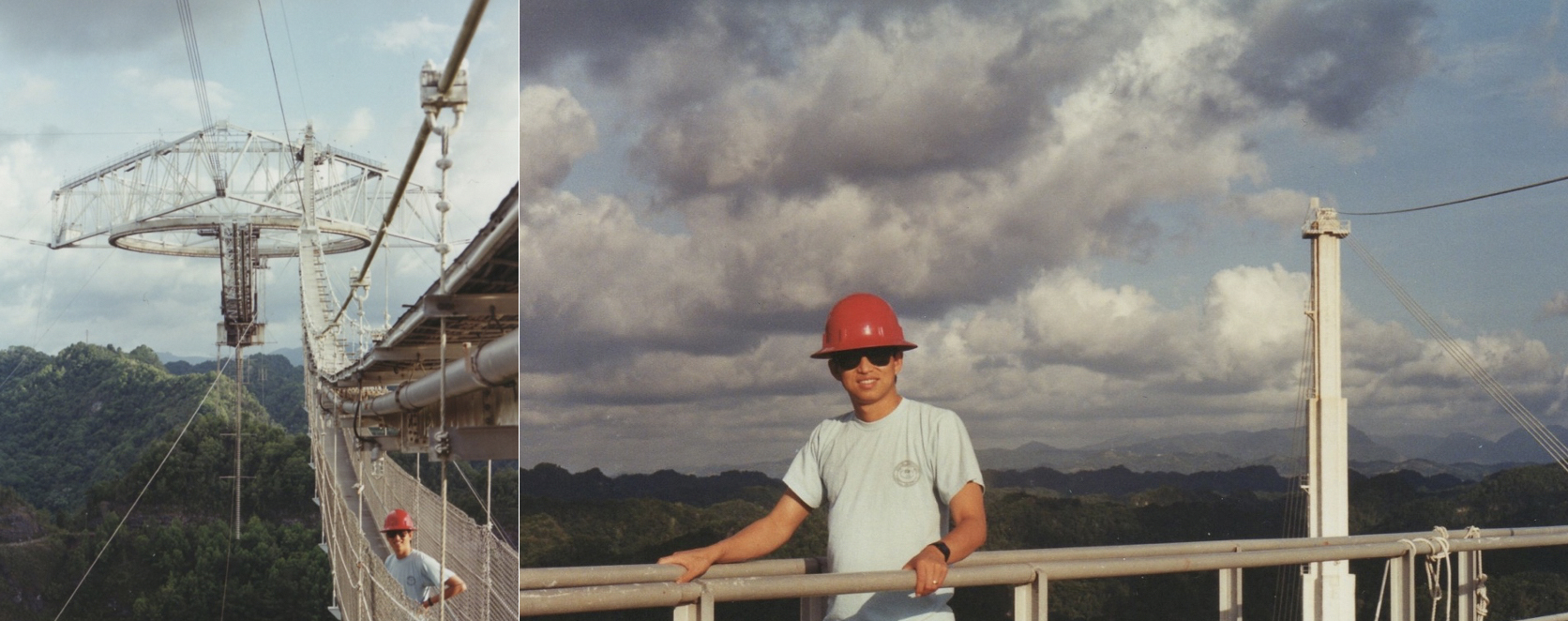
Memories of the Arecibo Telescope: A Q-and-A with Miami space physicist Qihou Zhou
Interview by Susan Meikle, university news and communications
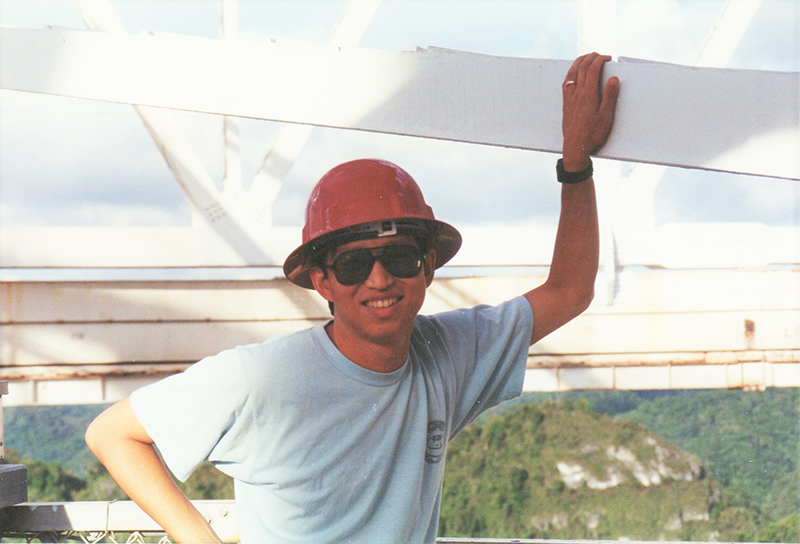
Qihou Zhou on Arecibo's instrument platform in 1993 (all images except last courtesy of Zhou).
Puerto Rico’s famed Arecibo Observatory telescope collapsed last week, ending an era of world-class research.
Arecibo, built in 1963, was the world's largest single-dish radio telescope until 2016, when China completed a larger one. At 305 meters (1,000 feet) across, the dish covered about 20 acres.
In August and November, two cables supporting a 900-metric-ton platform of scientific instruments above Arecibo’s dish unexpectedly broke. The National Science Foundation announced last month that it would shut down the facility permanently and planned to safely dismantle the telescope.
But the equipment platform, suspended some 500 feet above the dish, fell Dec. 1.
Space physicist Qihou Zhou, professor and chair of electrical and computing engineering at Miami University, worked at Arecibo for more than 10 years before joining Miami in 2002. He was a research and senior research associate at Cornell University-National Astronomy and Ionosphere Center, at Arecibo Observatory, from 1991-2002.
He has continued his research at Arecibo while at Miami. He has probably logged more time than anyone else using the observatory. “I would be very surprised if there is anyone else who actively used the radio telescope more than I did,” Zhou said.
His research in using radar techniques to study the ionosphere is recognized internationally. He was the first to use Arecibo radar data to study meteors, and his research has contributed to improving remote sensing technology at the extreme regions of the ionosphere.
Has your connection with Arecibo involved Miami students?
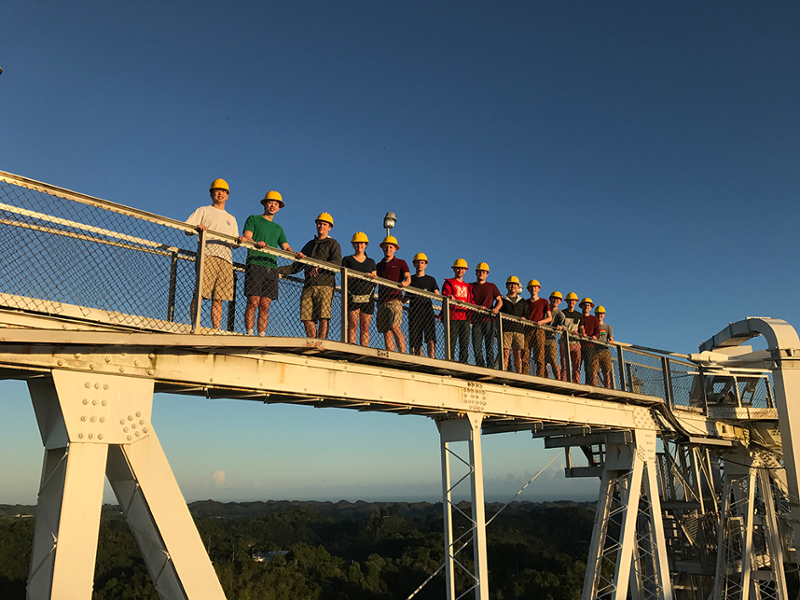
Zhou and students from his 2019 study-away class on the top rim of the instrument platform (same as top right). Some students not pictured, preferring to stay closer to the ground.
Yes, I have taken students for a study-away workshop during winter term at Arecibo since 2015, except for January 2018 after the effects of Hurricane Maria. (The deadly category 5 hurricane, which hit the island in September 2017, is regarded as the worst natural disaster in recorded history to affect Puerto Rico).
I have also advised senior capstone projects and Undergraduate Summer Scholar projects related to Arecibo. At least nine of my graduate students did their thesis research related to Arecibo.
In all, I have introduced about 150 Miami students to the observatory.
You first worked at Arecibo nearly 30 years ago. What are some memories from that time?
I shipped my car from Penn State (where he received his Ph.D.) to Puerto Rico after I was hired at Arecibo back in 1991. After I picked up the car from the port in San Juan, it stalled at the first light at Arecibo. (It was about a 90-minute drive from San Juan to Arecibo). Immediately a group of young people helped me push the car to a parking lot. They crawled underneath the car and tweaked every wire to fix it. They could not get it working but I really felt the warmth of the Puerto Rican people. (It turned out a misaligned piston knocked a hole in the engine.)
When I first saw the observatory, I was surprised by the fact that a few not-so-thick cables could support the tremendous structure.
My favorite moments were to watch the structure on a foggy day.
When was your last visit to Arecibo?
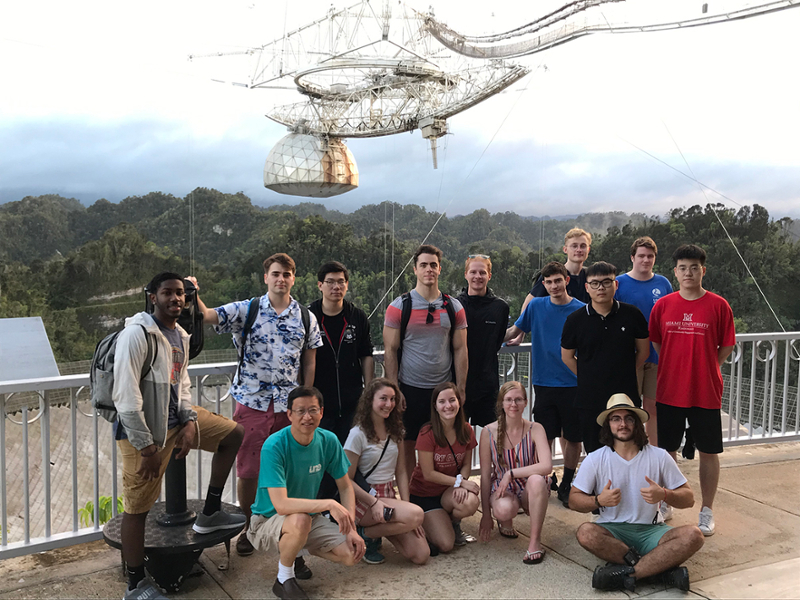
Qihou Zhou (left) and students from his 2020 study-away winter term class at Arecibo. Note the Gregorian dome structure in the background. It was installed in 1997 and so does not appear in the earlier photos above. The Gregorian dome enhanced the capability of the telescope but added a lot of weight, which unfortunately probably contributed to the collapse, Zhou said.
In Jan. 2020, with a class of 14 students. We were caught during the earthquakes.*
We got out of the building we were staying in twice in the wee hours. (We were about 40 miles away from the epicenter.) Everyone was disappointed that we could not have the platform tour. As a precaution, we hung out by the side of a swimming pool during the daytime. Students had to endure my power-point lecture by the poolside. When it was done, one student commented,"'it's good but a little bit too long'". I probably talked for 3 hours! (I did allow them to dive into the pool during the break.) This trip was definitely the biggest adventure of my life so far. (I am hoping that's it!).
*On Jan. 7, 2020 a magnitude 6.4 earthquake struck southwest Puerto Rico just before dawn, damaging more than 8,300 buildings. More than 3,000 smaller quakes occurred within about 20 miles of the epicenter of the Jan. 7 quake in that month alone. With dozens of aftershocks, people were still sleeping outside months later in government shelters and makeshift camps.
Will you be able to keep working on your ionosphere research, with the loss of the telescope?
Yes, my claim to fame is that I probably logged more time than anyone else using the facility.
I will be quite busy with all the ionosphere data we have collected. The Ionosphere is divided into different regions. My research spans from the lowest to the highest region.
Any parting words for the end of the telescope?
I am saddened that a great facility is gone. There is a tremendous effort in the scientific community to rebuild an Arecibo Observatory 2.0. It's a long shot given the budgetary situations potential funding entities are in.
But many wonderful things start with a dream.
Read about some of the most important discoveries of the Arecibo Observatory on its Legacy Discoveries website. Image below from Arecibo Observatory.
